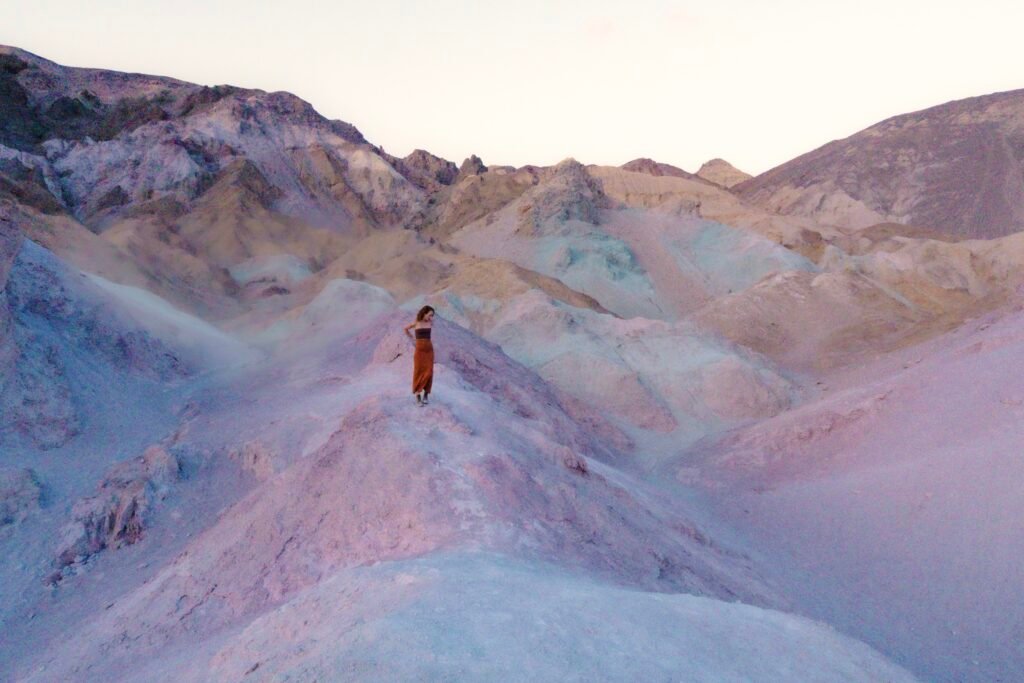*This post may contain affiliate links. If you make a purchase through one of these links, I may earn a small commission at no extra cost to you. Read my full disclaimer here.
Death Valley has a way of surprising you. It’s quiet, vast, and full of contrasts — jagged peaks, rolling dunes, salt flats, and some of the darkest night skies you’ll ever see. It feels wild, quiet, untouched, and raw all at the same time, and that’s what makes it unforgettable.
This is your Death Valley weekend itinerary – perfect for a quick escape, filled with sunrise hikes, desert landmarks, sunset views, stargazing, and all the must-see spots packed into one epic trip.
Planning Your Trip to Death Valley
Before you hit the road, a little planning goes a long way in making your Death Valley trip smooth and stress-free.
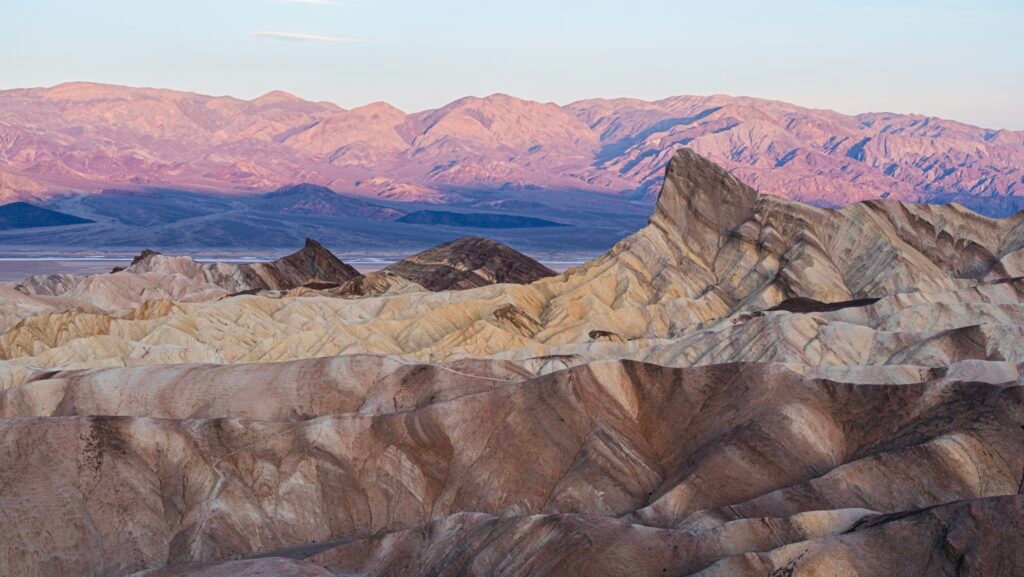
*Zabriskie Point at Sunrise
Best Time to Visit
Death Valley holds the title for hottest place on Earth, so timing your visit is key.
The best time to go is between November and March, when daytime highs are much more manageable — usually in the 60–70°F range. These cooler months are ideal for hiking, sightseeing, and actually enjoying the outdoors.
Avoid summer if you can. Temperatures regularly soar above 120°F, which makes exploring not just uncomfortable, but dangerous.
Getting There
Death Valley sits on the California–Nevada border and is easily reachable by car:
- From Las Vegas: ~2 hours
- From Los Angeles: ~4 hours
The drive is part of the adventure, with wide-open desert views that shift as you get closer to the park — it’s one of those drives that really sets the tone for where you’re headed.
Pro tip:
Fill up on gas before you enter the park. Gas stations are few and far between, and it’s easy to rack up miles once you’re inside.
Where to Stay
Camping
Death Valley has several campgrounds, like Furnace Creek and Texas Springs, that offer an authentic desert experience. If you’re looking to camp under the stars at an official campground, this is it. Book at recreation.gov
Off-road Camping
Death Valley permits off-pavement camping in certain areas, as long as you’re a safe distance from main roads. You can also purchase $10 slots for certain off-road sites at recreation.gov. Verify road conditions, as most routes beyond a few miles require a 4WD vehicle.
Lodging
There are a few hotels you can stay at within the park:
- The Ranch at Death Valley
A luxurious, historic resort built in 1927 featuring spring-fed pools, gardens, and stunning views—perfect for couples or anyone seeking an upscale desert escape.
→ Booking.com
- The Inn at Death Valley
Family-friendly and relaxed, this ranch-style lodge offers great amenities, access to the visitor center, and an on-site restaurant and general store.
→ Booking.com
→ Trip.com
- Stovepipe Wells Village Hotel
A classic Death Valley stay with a rustic charm, located near the Mesquite Flat Sand Dunes. It’s simple, clean, and ideal for adventurous travelers.
→ Expedia.com
- Panamint Springs Resort
Rustic and remote with epic sunsets, Panamint Springs offers motel-style rooms, tent cabins, and a great location on the park’s western edge—ideal for travelers coming from Lone Pine.
→ Booking.com
→ Trip.com
Day 1
Wake up early because your day is packed with world-class views and hikes, and sunrise at Zabriskie Point is one you will regret missing.
Zabriskie Point – for sunrise
There’s no better way to start your Death Valley adventure than catching the sunrise at Zabriskie Point. Watching the sun’s first rays light up the rolling waves of golden badlands will leave you speechless. It’s peaceful and almost otherworldly.
From this spot, you can embark on a hike to Red Cathedral along the Golden Canyon Trail. It’s an incredible route, and starting here adds to the experience. I highly recommend it!
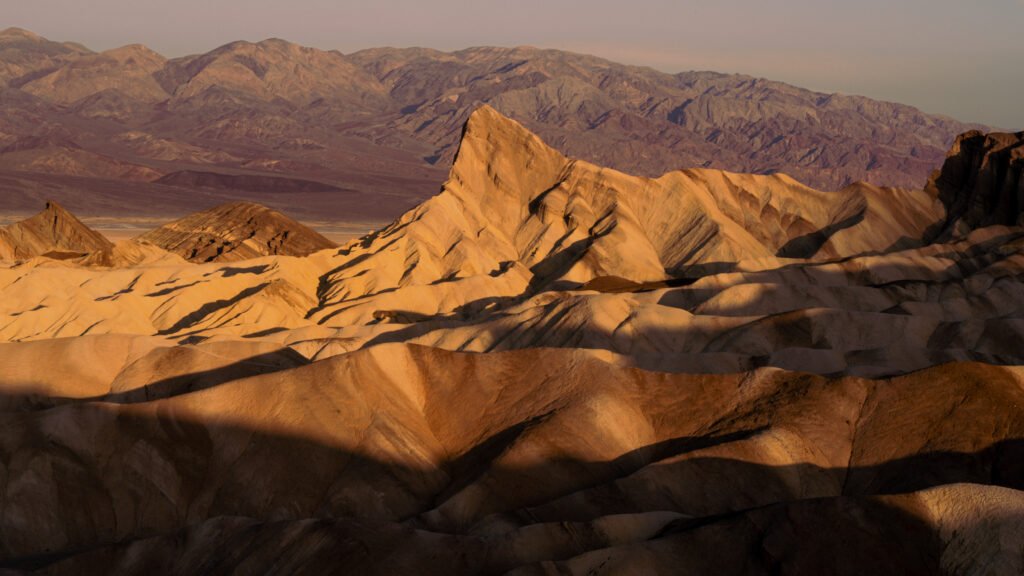
*Zabriskie Point at Sunrise
Hike Gower Gulch Loop
After exploring Zabriskie Point, continue your adventure with the Gower Gulch Loop. This moderate 4-mile hike offers stunning views of the badlands and leads you through narrow canyons and colorful rock formations. It’s a great way to immerse yourself in Death Valley’s unique landscape while avoiding the crowds.
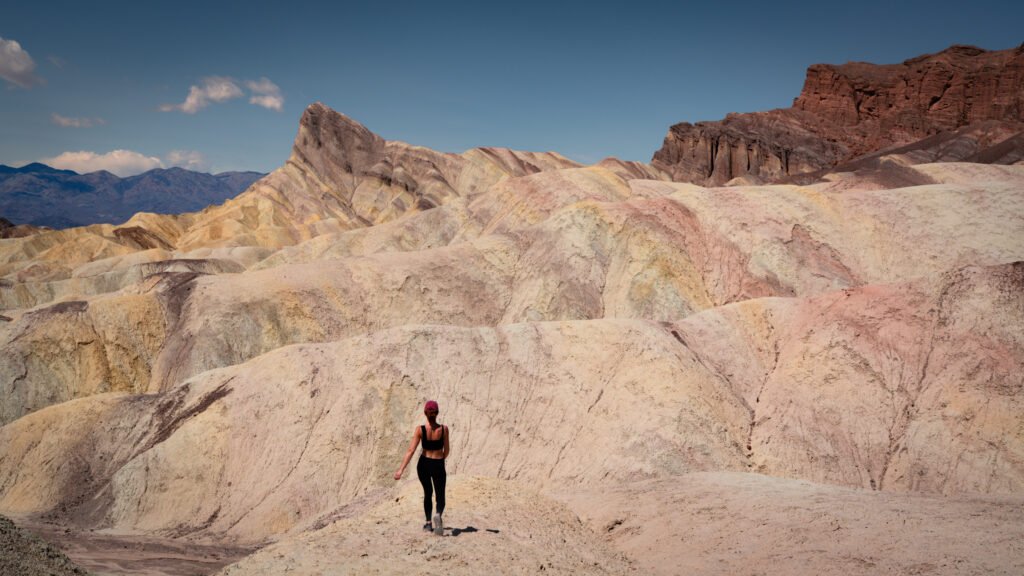
*A photo of me while hiking Gower Gulch Loop
Artists Drive
In the afternoon, take a drive along Artist’s Drive, a stunning 9-mile scenic loop perfect for a leisurely car ride. This route offers breathtaking views, leading to one of the park’s most captivating spots—Artist’s Palette. Here, vibrant mineral deposits create a kaleidoscope of colors across the hills, a natural masterpiece that feels like an open-air art exhibit.
Artists Palette – for sunset
There’s something really magical about being at Artists Palette as the sun sets. The colors of the minerals deepen, creating a scene you’ll want to sit and savor. Trust me, this is one spot worth lingering at to watch day fade into night. I come here almost every evening I’m there and I can’t get enough! It’s my favorite place in the park.
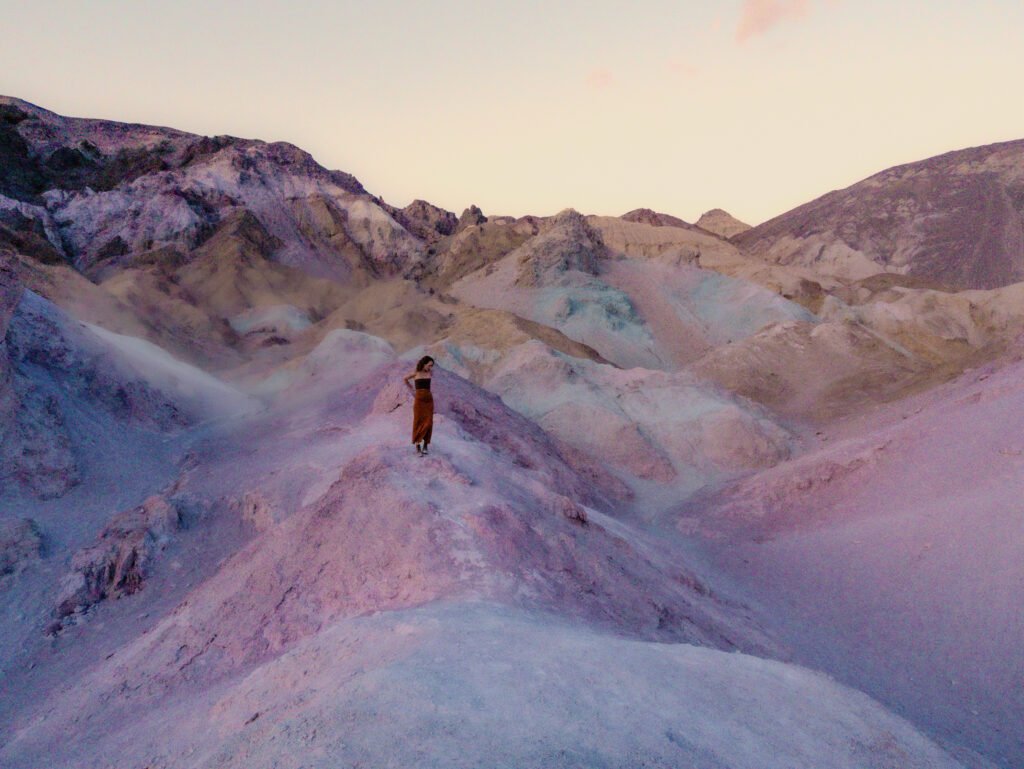
*A photo of me at Artists Palette at sunset
Day 2
Day two brings more iconic spots and some of the most surreal landscapes you’ll encounter.
Sunrise at Mesquite Flat Sand Dunes
If you’re a sucker for dramatic desert landscapes, don’t miss the sunrise at Mesquite Flat Sand Dunes. The sand looks untouched in the soft morning light, and it’s the perfect time to explore deep into the dunes with no crowd!

*Mesquite Flat Sand Dunes during Sunrise
Badwater Basin
Head to Badwater Basin, the lowest point in North America at 282 feet below sea level. The vast salt flats here create a surreal, otherworldly landscape, with intricate hexagonal patterns and grooves etched into the terrain by years of evaporation and mineral buildup. It’s a stunning natural phenomenon that stretches as far as the eye can see.
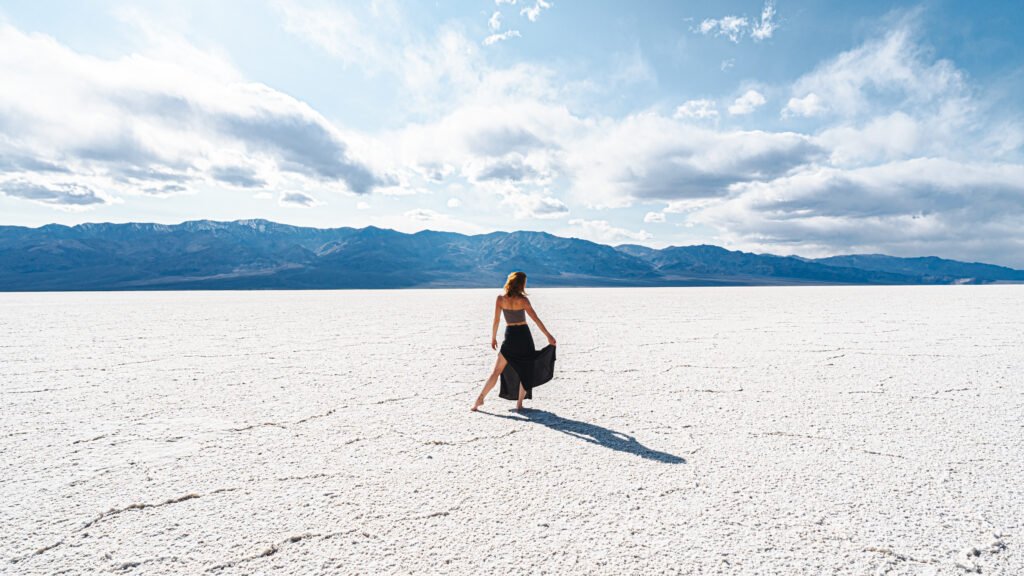
*A photo of me at Badwater Basin, where you can see the patterns in the terrain
Dante’s View
For a wild change of perspective, drive up to Dante’s View. In just a short trip, you’ll go from being below sea level in Death Valley to standing 5,575 feet above it. The dramatic change in elevation is mind-blowing, and so is the view—sweeping panoramas of the valley below. It’s cooler up here, so take your time soaking it all in!
The Devil’s Golf Course
This eerie, jagged expanse of salt and minerals got its name for a reason. It’s one of the most unique spots I’ve seen, and it’s a testament to the power of nature. You won’t need much time here, but the views are worth the quick stop.
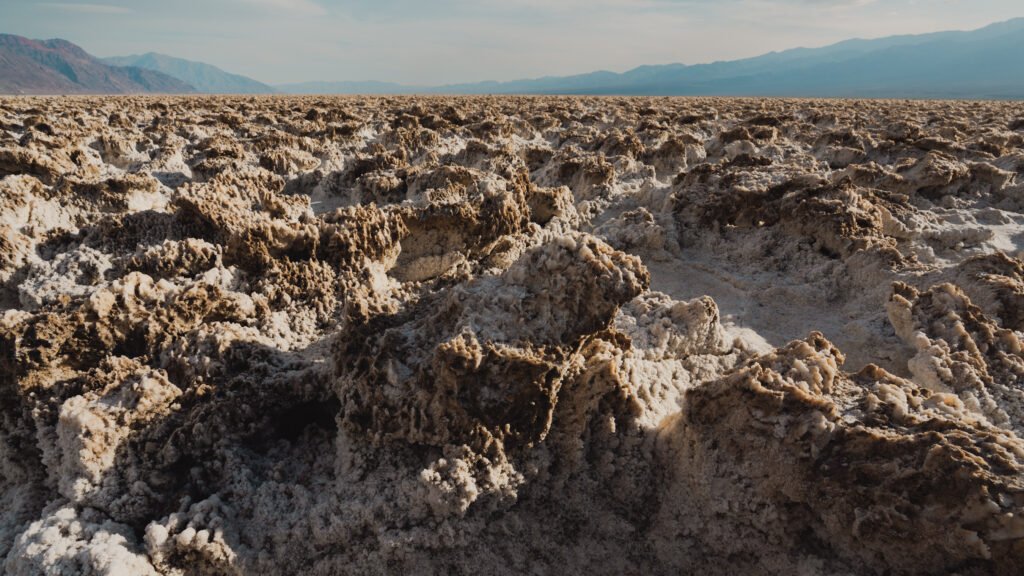
*The Devil’s Golf Course around mid-day
Photograph the Stars
Wrap up your weekend beneath the stars at Mesquite Flat Sand Dunes, one of the best places in the park for nighttime stargazing. As an official International Dark Sky Park, Death Valley offers some of the clearest, most awe-inspiring night skies in the country — you’ll likely see more stars than you ever thought possible.
Bring a blanket, stretch out on the soft sand, and let the sky put on a show. And if you’re into astrophotography, this is the perfect spot to capture stunning long exposures of the Milky Way, star trails, or moonlit dunes.
View my blog on Astrophotography Gear and Tips and plan to capture some amazing night sky shots!
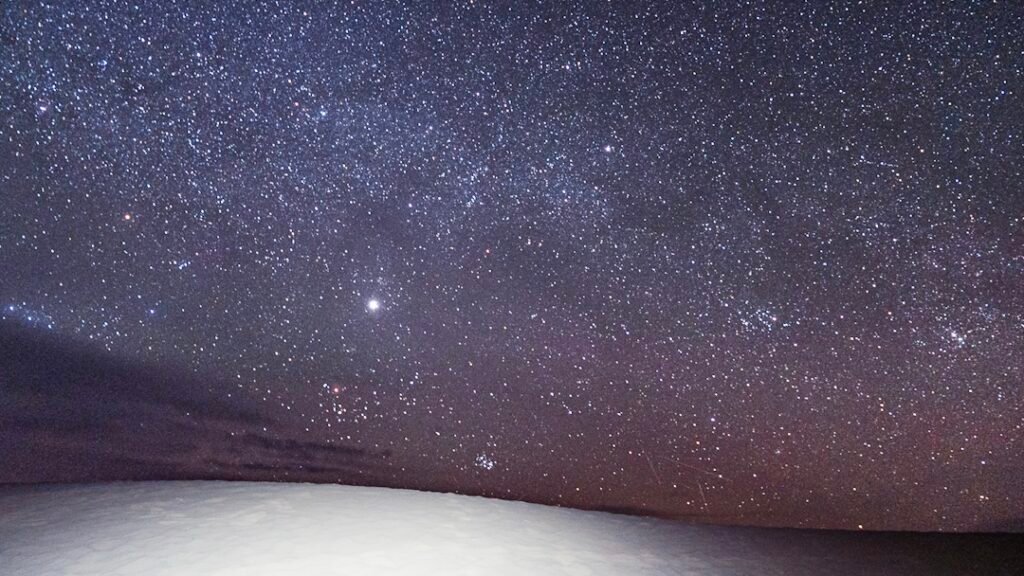
*A photo I took of the night sky at Mesquite Flat San Dunes
Where to Eat & Stock Up in the Park
After a day of exploring slot canyons, salt flats, and sand dunes, you’re going to want something good to eat — and maybe a cold drink, too. While Death Valley might seem like the last place you’d find solid food options, the park actually has a few surprisingly good spots to refuel, along with a couple of markets where you can stock up on road trip or trail essentials.
One of my favorite places is The Last Kind Words Saloon, located at The Ranch at Death Valley. It’s got a full-on Old West vibe — vintage decor, saloon doors, and hearty meals like burgers, steaks, and cocktails that totally hit the spot after a long day in the heat. It’s quirky, atmospheric, and a must if you’re nearby.
If you’re looking for something quicker or more casual, The 19th Hole offers grab-and-go bites during the day, and there’s also a cafeteria-style restaurant at The Ranch for basic but filling meals.
Need to stock up? The General Store at The Ranch is your go-to for trail snacks, bottled drinks, basic groceries, ice, sunscreen, and even a few camping supplies. It’s not a full grocery store, but it’s perfect if you forgot something or want to pack a cooler for your adventures. There’s also a small gift shop with snacks at Furnace Creek Visitor Center.
💧 Don’t Forget About Water
This is one of the hottest places on Earth — no joke. Always carry more water than you think you need, especially if you’re hiking or heading to remote areas. Most of the developed areas like Furnace Creek, Stovepipe Wells, and the Visitor Center have water refill stations, but don’t count on finding them everywhere.
Pro tip: bring a large refillable jug in your car, plus a hydration pack or water bottles for when you’re on the trail. Dehydration can sneak up quickly here, even on short hikes.
Tips and Considerations
To make your trip as enjoyable as possible, here are a few reminders and tips:
What to Bring:
- Plenty of water (I recommend a gallon per person/day – even in the cooler months)
- Sunscreen and a hat
- Layers and good sleeping gear if camping
- Good hiking boots / chacos
- Excitement 🙂
Photography Tips:
Death Valley is one of the best places in the world to photograph the night sky — with its incredibly dark skies, wide open landscapes, and minimal light pollution, it’s a dream for astrophotographers. For the best results, plan your shoot around new moon phases, and head out to remote areas like Badwater Basin or Mesquite Flat Sand Dunes.
View my blog on Astrophotography Gear and Tips so you can capture some amazing night sky shots!
And don’t forget: sunrise and sunset also offer magical light for dramatic desert shots. Bring a sturdy tripod for those long exposures, whether you’re capturing golden hour, blue hour, or stars streaking across the sky.
Visit locations at sunrise and sunset for the best lighting! Use a tripod for those incredible star shots.
